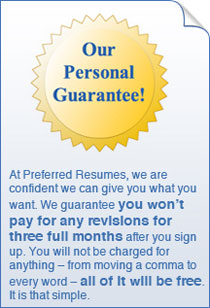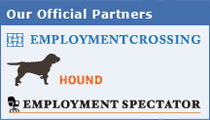Resume Banks - what they are and how should you use them?
|
|
Most companies now have a special area on their web site dedicated to careers, listing available positions from entry level to higher management (executive positions are often filled through head hunters, or personal recruitment). Larger, more sophisticated companies allow you to create a professional profile on their web site and upload your resume. This allows you to apply for an available position of your interest, and it allows company’s recruiting team to match your resume to an available position they are looking to fill. Most companies list contact information for their available positions, so that you can reach out to the appropriate person and submit your resume for consideration. However, unless you are targeting a handful of organizations, consider the amount of time it would take you to review web sites and job postings of all the different companies in your area. You would surely get frustrated and give up. Resume banks, more commonly known as resume databases, are a much better resource for job seekers. These databases have two functions: they allow you to search a comprehensive listing of available jobs from a large number of companies, as well as upload your current resume and make it available for those same employers find you.
Resume databases, such as monster.com or careerbuilder.com, have been successful in building their online presence because they responded to the growing needs of the companies looking for qualified professionals, and to the needs of busy professionals looking to expand their careers. Resume databases should be free – while you will be asked to register on the web site, you should not have to pay any membership fees. You can search through a resume database without having to register on the web site; some sites however may restrict the number of jobs you can view or the amount of details you can get from a job posting.
Registering with a resume bank has its benefits. If you are looking for jobs, you know first hand how time consuming the search can be. Making your resume available to a large number of employers can certainly help speed up the process. When registering, include your contact information and your most up to date resume. Do not post a sample cover letter. Although they are mostly discarded from resume banks, cover letters are meant to be personalized. Posting a generic cover letter along with your resume doesn’t help you get noticed. If you are seeking a new job while still working, you have valid concerns about your employer finding your resume in one of these databases. Some resources recommend leaving off your current job – however, many professionals don’t want to do so, because it is their current job that serves as that step stone to the next point in their careers. We recommend including a title, but leaving off the company name. Also, consider posting a functional resume over chronological one, and make a note in your profile that a detailed resume can be emailed upon request. Make sure that the resume you have posted in the database is current. Do not date your resume – this way it will not appear out dated to employers. Log into the web site once every few months and update your profile and your resume if you are actively looking for a job (always provide most up-to-date contact information, even if you don’t have time to update the complete profile).
Resume banks, or databases, can help you gain access to a large number of job postings, so don’t steer away from them. However, make sure that your profile and your resume are posted on reputable sites, such as monster.com. If you are unsure of the credibility of the site, do some research online and see what others have to say about it. Make sure your profile is up to date. And finally, don’t rely on employers to find you. If you are actively searching for a new job, review the listings regularly and seek out the opportunities that best meet your career objectives.




